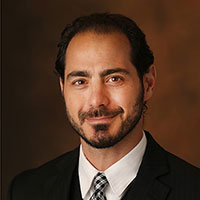All-terrain vehicles (ATVs) and dirt bikes have been growing in popularity since their introduction in the 1970s, accompanied by a similar rise in riders suffering serious or fatal injuries — incidents that spiked during the pandemic.
Trauma physicians believe such injuries, particularly in children, could have been avoided or mitigated by use of a protective helmet.
Research to identify the wide range of risk factors that converge during a crash, Vanderbilt researchers have generated data that can help improve pubic-education efforts.
“We studied not only individual factors but also social ones — like the relative poverty or affluence of the counties in which the children lived.”
“Several earlier studies had looked at individual risk factors for serious injury among kids riding ATVs,” said Christopher Bonfield, M.D., a co-author and an associate professor of neurological surgery at Vanderbilt.
“We studied not only individual factors but also social ones — like the relative poverty or affluence of the counties in which the children lived. Ours is the first study taking this broader view. It’s very concerning that most injured kids in ATV crashes aren’t wearing helmets. We’re trying to help address this.”
The American Academy of Pediatrics states that people under age 16 should not drive or ride an ATV.
Common Injuries
Both the power and speed of ATVs and dirt bikes have increased over time, potentially leading to more serious injury. Between 1985 and 2015, ATV crashes killed more than 3,000 children younger than 16, and about a million more sought care in emergency departments after such crashes.
Tennessee has a law requiring minors to wear helmets, but it is seldom enforced, said Stacey Pecenka, M.P.H., manager of Vanderbilt’s Trauma Injury Prevention Program.
“Kids can sustain head injuries when they’re not helmeted or when they crash with too many passengers riding,” Pecenka said.
ATV-related injuries may also involve the neck and abdomen, as well as in extremities. In the United States, on average, more than 700 people die each year from injuries sustained in ATV crashes.
When youngsters with head trauma reach Vanderbilt’s emergency department, the team has refined its approach to providing the safest and most cost-effective care.
Riders to Injury
In their recent report, Vanderbilt researchers analyzed data on 680 pediatric patients treated after an ATV (75 percent) or dirt bike (25 percent) crash between January 1, 2010, and December 31, 2019. Slightly more than 71 percent were male and almost 93 percent identified themselves as white.
The majority of treated riders – 66.2 percent – were not wearing a helmet when the crash occurred. More females, 77.9 percent, and people riding as passengers, 89.5 percent, were without helmets when the crash occurred.
The researchers noted that children not wearing helmets were more likely to live in counties with a lower median annual income — $52,111 compared to $57,029 among those helmeted. Per capita income also was lower for children riding without a helmet — $27,252 versus $29,248.
Additionally, high school graduation rates were lower in the home counties of the unhelmeted riders, 85.8 percent versus 87.0 percent. However, there was no difference in race or ethnicity found.
“We need to heighten awareness of common-sense precautions among parents and teenage riders themselves, but also for primary care providers,” said senior author Harold Lovvorn, M.D., a pediatric surgeon and professor of pediatrics at Vanderbilt.. “PCPs could include discussing safe riding using a safety check list.”
“We need to heighten awareness of common-sense precautions among parents and teenage riders themselves, but also for primary care providers.”
“They see quickly how negatively a child’s life could be impacted,” she added. “We also need to make more use of social media to get our safety messages across.”
Pacenka notes other factors that need to be considered as well.
“We need to take into account socioeconomic factors when educating families in this region on ATV safety, and we’ll continue to pursue funding to buy helmets and other safety gear for families who can’t afford them,” she said.








